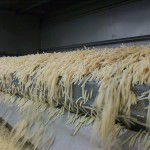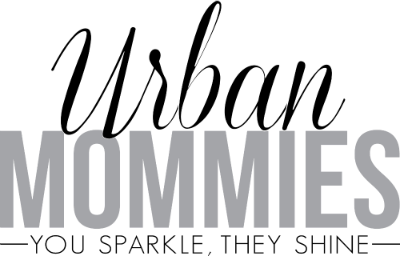 As a rule, fries are not a healthy choice as a diet staple. They’re filled with carbs and are usually deep fried. But they are also a great source of potassium – 20 x more than a banana. You’re not eating organic spinach here. But for those who want to order a ‘French Fry’, I will tell you what I witnessed. They are real potatoes, and have few added ‘mystery’ ingredients. I’m not forcing you to order them or wanting you to feed them to your children on a daily basis. But when you do treat yourself (I have always considered them a huge treat, and I have always loved the taste), just know that you’re eating real food.
As a rule, fries are not a healthy choice as a diet staple. They’re filled with carbs and are usually deep fried. But they are also a great source of potassium – 20 x more than a banana. You’re not eating organic spinach here. But for those who want to order a ‘French Fry’, I will tell you what I witnessed. They are real potatoes, and have few added ‘mystery’ ingredients. I’m not forcing you to order them or wanting you to feed them to your children on a daily basis. But when you do treat yourself (I have always considered them a huge treat, and I have always loved the taste), just know that you’re eating real food.
Q: What’s the relationship between the farmers and the manufacturers?
A: McCain has a team of dedicated agronomists to assist the farmers in producing the best crop possible. It is truly a mutually advantageous relationship. Kind of like ‘happy wife, happy life’. Happy farmer, happy McCain people, happy McDonald’s business units, happy customers. Or something.
Q: Are chemicals used at the farm level in growing potatoes?
A: The big lesson about pesticides, fungicides and fertilizers? Farmers have to purchase the stuff themselves out of their own budgets. Chemicals are expensive. If there is an opportunity not to spend the money on chemicals, they will obviously opt not to. The agronomists help the farmers to determine the point at which fertilizers are required.
There are currently two programs in place that are part of McDonald’s specification that apply to safety and social responsibility for potatoes. One is the Good Agricultural Practices (GAP) audit, which through a number of established and documented surveys and audits assures the growers are meeting food safety, specific agricultural practices, and socially responsible people practices.
The second program, established in 2010, is the IPM/ICM (Integrated Pest Management and Integrated Crop Management) survey. This program assesses the use of various practices including approaches to minimize and optimize the use of any input from pesticide, fertilizer, and water. There will be a quiz on this later.
The chemicals used on McDonald’s potato crops must be approved for use in Canada, the USA and any other country to which the fries may be shipped. The levels need to be at or below the Maximum Residue Level of these countries.
Q: What’s up with the Youtube video where the fries never get moldy?
A: Quite simply, the fries are so thin and contain so little moisture after being put through the dryer, there is not enough water contained within to assist in decomposition. Further in the process, the flash frying and instantaneous freezing, and then at the restaurant level popping the fries immediately into the canola fry oil does not offer any opportunity for moisture to creep into the fry. Believe me. We saw what would happen if the process wasn’t followed and the result were grey/black fries that decomposed and stunk like old lunches in a high school locker.
Q: What ingredients are in the par fry oil?
A: The par fry oil is made up of canola oil, hydrogenated soybean oil, safflower oil, natural vegetable flavor, citric acid, TBHQ (a preservative) and dimethylpolysiloxane (antifoaming agent).
TBHQ is a highly effective antioxidant. In foods, it is used as a preservative for unsaturated vegetable oils and many edible animal fats. The European Food Safety Authority (EFSA), the United States Food and Drug Administration (FDA) and Health Canada have all evaluated TBHQ and determined that it is safe to consume at the concentration allowed in foods.
Dimethylpolysiloxane is considered to be an inert, non-toxic, non-flammable ingredient used as a matter of safety to keep the oil from foaming and boiling over. A review of animal studies by The World Health Organization (the Joint FAO/WHO Expert Committee on Food Additives) found no adverse health effects associated with dimethylpolysiloxane. (I LOVE saying that word).
The amount of both these ingredients is minimal in the oil and the amount of oil absorbed by the French fries makes it even safer.
 Q: What tests and systems of check and balance are in place to ensure quality?
Q: What tests and systems of check and balance are in place to ensure quality?
A: First, the ‘test kitchen’. Every 30 minutes, one bag is removed from the line, analyzed for colour, diversity of size, blemishes and taste. There is actually an identical frying station to those found in McDonald’s restaurants and fries are sampled every 30 minutes to check quality. If there are too many spots or anything wrong, the whole system is shut down. I can say the fries I ate in this room – made from potatoes we’d seen harvested in the field the day before – were the absolute best I’d ever tasted.
In addition, there are metal scanners at the final stage before boxing the fries, so if a machine drops a widget or an employee’s gold tooth actually falls out into the line, the bag is rejected.
Q: Are the fries vegetarian-friendly?
A: This one was answered in my previous Q and A found here.
 Apparently since 1885 in England, when the first mention of this dish hit literature, Ale Cottage Pie has been used to describe a beef dish covered in potato, whereas Shepherd’s Pie would contain lamb instead. (Shepherds care for sheep, not cattle). The addition of a dark ale enhances the flavours and adds depth to this simple, kid-friendly dish.
Apparently since 1885 in England, when the first mention of this dish hit literature, Ale Cottage Pie has been used to describe a beef dish covered in potato, whereas Shepherd’s Pie would contain lamb instead. (Shepherds care for sheep, not cattle). The addition of a dark ale enhances the flavours and adds depth to this simple, kid-friendly dish.



